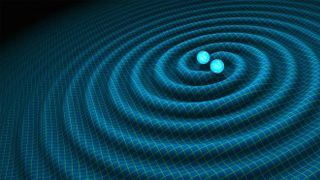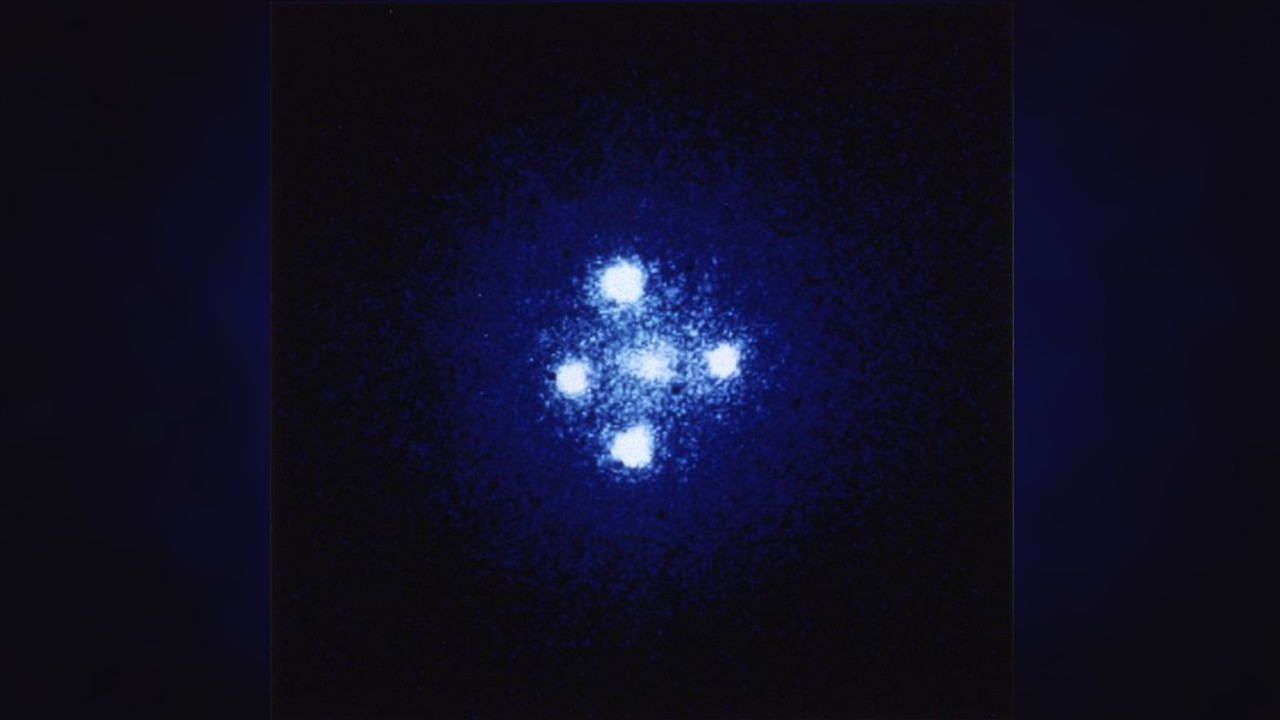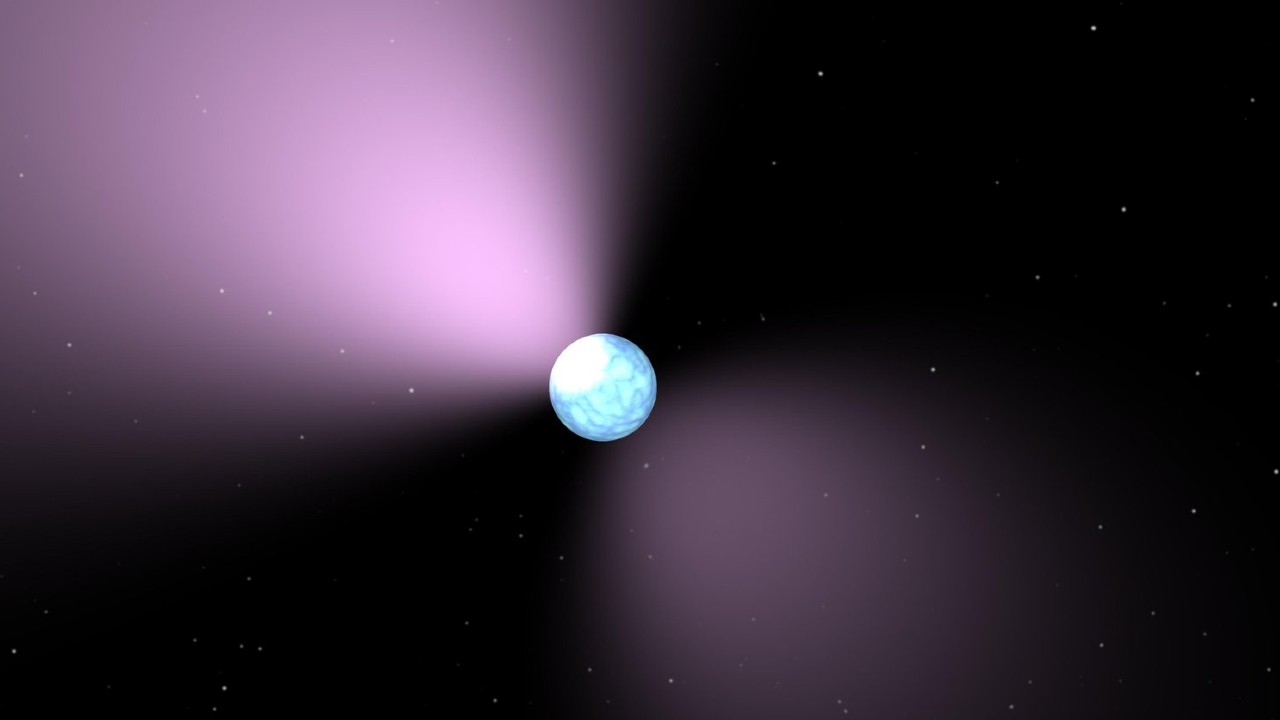Einstens Theory Abiout Gravitational Waveas Was Jsut Rpved Right Again
Einstein'south theory of general relativity

Full general relativity is physicist Albert Einstein's understanding of how gravity affects the textile of infinite-time.
The theory, which Einstein published in 1915, expanded the theory of special relativity that he had published 10 years earlier. Special relativity argued that space and time are inextricably continued, but that theory didn't acknowledge the existence of gravity.
Einstein spent the decade between the two publications determining that particularly massive objects warp the fabric of space-fourth dimension, a distortion that manifests as gravity, according to NASA.
Related: The hunt for wormholes: How scientists await for space-time tunnels
How does general relativity work?
To empathize full general relativity, starting time, let's get-go with gravity, the force of attraction that two objects exert on one another. Sir Isaac Newton quantified gravity in the same text in which he formulated his three laws of motion, the "Principia."
The gravitational forcefulness tugging between two bodies depends on how massive each one is and how far autonomously the two lie, according to NASA. Even every bit the center of the Earth is pulling you toward information technology (keeping you firmly lodged on the ground), your center of mass is pulling back at the Earth. Merely the more massive body barely feels the tug from you, while with your much smaller mass y'all find yourself firmly rooted thanks to that same force. However Newton's laws assume that gravity is an innate force of an object that can act over a distance.
Albert Einstein, in his theory of special relativity, determined that the laws of physics are the same for all non-accelerating observers, and he showed that the speed of light within a vacuum is the aforementioned no matter the speed at which an observer travels, according to Wired.
Every bit a result, he found that space and time were interwoven into a single continuum known every bit infinite-time. And events that occur at the same fourth dimension for i observer could occur at different times for some other.
Related: What would happen if the speed of light was much lower?
As he worked out the equations for his full general theory of relativity, Einstein realized that massive objects caused a baloney in infinite-time. Imagine setting a large object in the center of a trampoline. The object would press down into the fabric, causing it to dimple. If you and then attempt to roll a marble effectually the edge of the trampoline, the marble would screw inwards toward the body, pulled in much the aforementioned way that the gravity of a planet pulls at rocks in infinite.
In the decades since Einstein published his theories, scientists accept observed endless of phenomena matching the predictions of relativity.
Gravitational lensing
Lite bends around a massive object, such as a black hole, causing it to deed every bit a lens for the things that prevarication behind it. Astronomers routinely use this method to written report stars and galaxies backside massive objects.
The Einstein Cross, a quasar in the Pegasus constellation, according to the European Infinite Bureau (ESA), and is an fantabulous example of gravitational lensing. The quasar is seen every bit it was about eleven billion years agone; the galaxy that it sits backside is about ten times closer to Earth. Because the two objects align and then precisely, four images of the quasar announced around the milky way because the intense gravity of the milky way bends the light coming from the quasar.
Related: What Is Quantum Gravity?
In cases like Einstein'south cross, the different images of the gravitationally lensed object announced simultaneously, but that isn't always the example. Scientists have also managed to observe lensing examples where, because the light traveling around the lens takes different paths of different lengths, different images arrive at different times, as in the instance of ane particularly interesting supernova.

Changes in Mercury'southward orbit
The orbit of Mercury is shifting very gradually over time due to the curvature of space-time around the massive sun, according to NASA.
As the closest planet to the sun, Mercury's perihelion (the betoken forth its orbit that it's closest to the sun) is predicted to follow a slightly different direction over fourth dimension. Nether Newton'southward predictions, gravitational forces in the solar system should advance Mercury'south precession ( change in its orbital orientation) is measured to be v,600 arcseconds per century (ane arcsecond is equal to ane/3600 of a caste). Even so, there is a discrepancy of 43 arcseconds per century, something Einstein'southward theory of general relativity accounts for. Using Einstein'south theory of curved space-fourth dimension, the precession of Mercury'due south perihelion should advance slightly more under the predictions of Newton, since planets don't orbit the dominicus in a static elliptical orbit.
Sure enough, several enquiry papers published since the mid 20th century have confirmed Einstein'south calculations of Mercury's perihelion precession to exist accurate.
In a few billion years, this wobble could even cause the innermost planet to collide with the sun or a planet.
Frame-dragging of space-time effectually rotating bodies
The spin of a heavy object, such equally Globe, should twist and distort the space-time around it. In 2004, NASA launched the Gravity Probe B (GP-B). The axes of the satellite's precisely calibrated gyroscopes drifted very slightly over time, according to NASA, a result that matched Einstein's theory.
"Imagine the Earth every bit if it were immersed in beloved," Gravity Probe-B principal investigator Francis Everitt, of Stanford University, said in a NASA statement about the mission.
"As the planet rotates, the honey around information technology would swirl, and it's the same with space and fourth dimension. GP-B confirmed 2 of the most profound predictions of Einstein's universe, having far-reaching implications across astrophysics research."
Gravitational redshift
The electromagnetic radiations of an object is stretched out slightly inside a gravitational field. Recollect of the audio waves that emanate from a siren on an emergency vehicle; every bit the vehicle moves toward an observer, audio waves are compressed, but as it moves abroad, they are stretched out, or redshifted. Known as the Doppler Effect, the same phenomena occurs with waves of light at all frequencies.
In the 1960s, co-ordinate to the American Physical Lodge, physicists Robert Pound and Glen Rebka shot gamma-rays first down, so up the side of a tower at Harvard University. Pound and Rebka found that the gamma-rays slightly inverse frequency due to distortions caused by gravity.
Gravitational waves
Einstein predicted that trigger-happy events, such as the collision of ii black holes, create ripples in space-time known equally gravitational waves. And in 2016, the Laser Interferometer Gravitational Moving ridge Observatory (LIGO) announced that information technology had detected such a betoken for the first time.
That detection came on Sept. fourteen, 2015. LIGO, made upward of twin facilities in Louisiana and Washington, had recently been upgraded, and were in the procedure of being calibrated earlier they went online. The first detection was and so large that, according to then-LIGO spokesperson Gabriela Gonzalez, information technology took the team several months of analysis to convince themselves that information technology was a existent signal and not a glitch.
Related: Phantom energy and dark gravity: Explaining the night side of the universe
"We were very lucky on the first detection that it was and so obvious," she said during the 228 American Astronomical Society coming together in June 2016.
Since so, scientists accept begun speedily communicable gravitational waves. All told, LIGO and its European counterpart Virgo have detected a full of 50 gravitational-moving ridge events, according to program officials, according to the Light amplification by stimulated emission of radiation Interferometer Gravitational-moving ridge Observatory.
Those collisions have included unusual events like a collision with an object that scientists can't definitively identify as blackness hole or neutron star, merging neutron stars accompanied by a bright explosion, mismatched black holes colliding and more.
Observing neutron stars

In 2021 research published in the periodical Physical Review X, challenged several of Einstein'due south predictions by observing a double-pulsar organisation around two,400 light-years from World. Each of the seven predictions of general relativity was confirmed past the written report.
Pulsars are a type of neutron star that appears to pulse due to beams of electromagnetic radiation and that are emitting from their magnetic poles.
The pulsar exam subjects spin very fast - effectually 44 times a second - and are xxx% more massive than the lord's day but are only 15 miles (around 24 kilometers) in bore, making them incredibly dense. This ways that their gravitational pull is immense, for example, on the surface of a neutron star gravity is around 1 billion times stronger than its pull on Earth. This makes neutron stars a cracking test subject to challenge predictions in Einstein's theories, such as the ability of gravity to curve light.
"Nosotros follow the propagation of radio photons emitted from a cosmic lighthouse, a pulsar, and track their motility in the strong gravitational field of a companion pulsar," Professor Ingrid Stairs from the University of British Columbia at Vancouver said in a statement.
"Nosotros meet for the first time how the lite is not simply delayed due to a potent curvature of spacetime around the companion, but also that the light is deflected by a modest angle of 0.04 degrees that we can find. Never before has such an experiment been conducted at such a high spacetime curvature" Stairs adds.
Additional resource
- Relativity: The Special and the Full general Theory - 100th Anniversary Edition
- The Nature of Space and Time (Isaac Newton Establish Serial of Lectures, 3)
- The Physics Book: Big Ideas Simply Explained
Join our Space Forums to go along talking infinite on the latest missions, night sky and more! And if you accept a news tip, correction or annotate, let u.s. know at: community@space.com.
Source: https://www.space.com/17661-theory-general-relativity.html
0 Response to "Einstens Theory Abiout Gravitational Waveas Was Jsut Rpved Right Again"
Post a Comment